
'The Beginner's Guide to Hike & Fly – a paragliding book on walking' by Aimilios Apostolopoulos, 2021
Book review by Kinga Masztalerz
Kinga is a New Zealand based global mountain paragliding pilot and adventurer specialising in vol-bivouac and multi-day hike & fly. She is a Red Bull X-Alps athlete, New Zealand champion, and holder of two distance records and kindly reviewed Aimilios' book for us*.
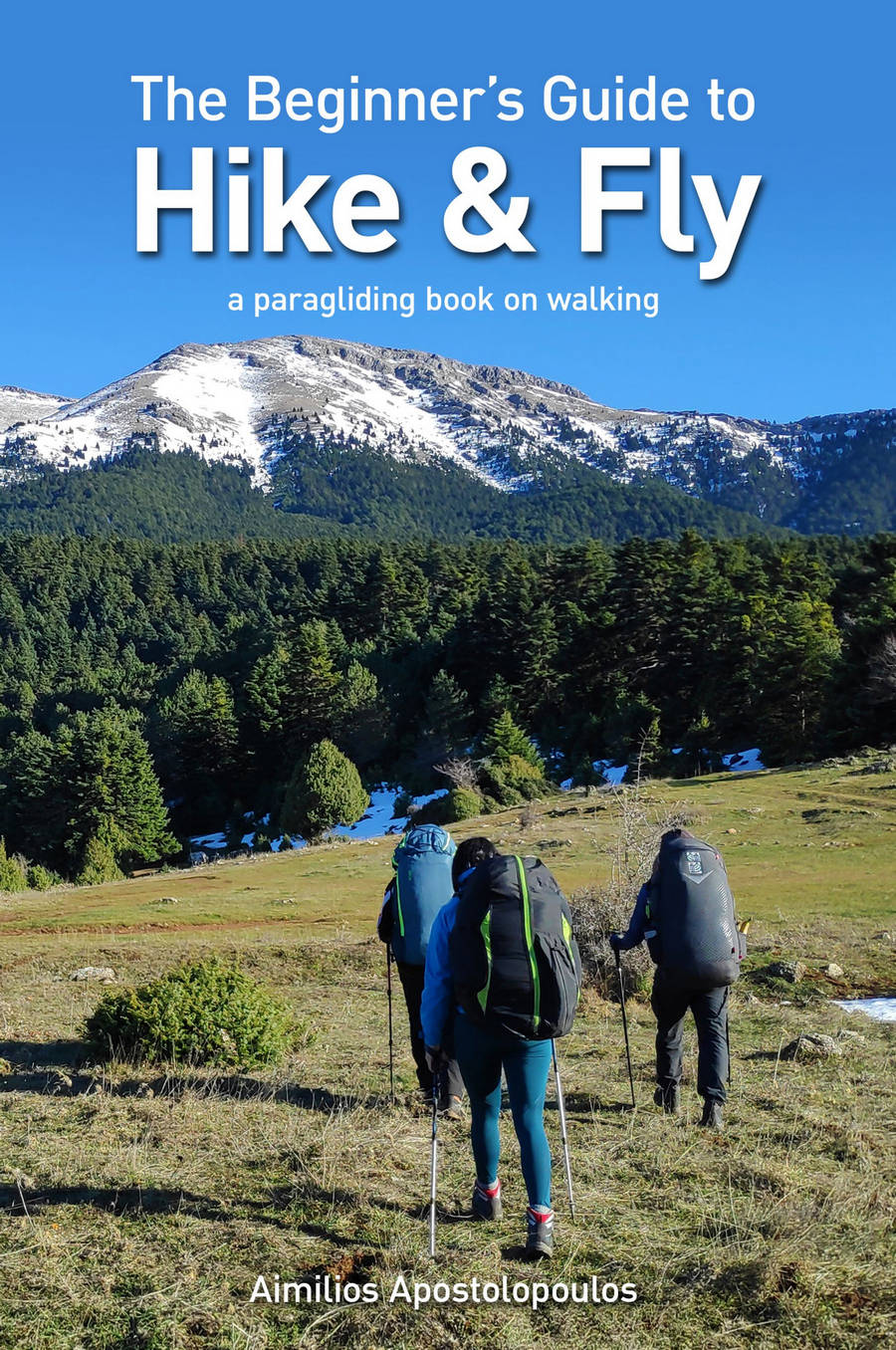
Hike & fly is growing in popularity with more and more pilots wanting to get into it, but often not knowing where to start, how to choose the right gear and clothing, how to plan a trip, find a good take-off, and assess if the conditions are safe. The Aimilios' 'Guide' is the first book addressing these issues. It's for paragliding pilots who have some experience in flying but none or very little experience in hiking and want to get started. Mads Syndergaard helped edit and wrote in the preface that the book represents 'the very low-tech approach – 'You'd like to do some hike & fly? Well, pick up that bag and start hiking!'
Statements like these are close to my heart, as I started to hike & fly with my 17kg normal gear, running shoes, and some dusty old trekking poles found at the staircase of my apartment. You don't need the lightest and newest gear to go for a hike & fly, yet, most questions beginning hike & fly and vol-bivouac pilots ask me, are about the choice of gear. Naturally, when starting a new activity we have no experience and no clue, so at least we can have the best gear possible and control this aspect of the adventure. So, despite the 'pick up that bag and start hiking' intro, the next 60 pages are filled with gear advice and options for everyone, which should answer all the gear questions of any aspiring hike & fly pilot. From paragliding harness to socks to trekking poles, Aimilios covers it all. I'm now sneering at the 'just pick up that bag and start hiking' false advertising, but also understand that the variety of gear choices might be overwhelming for a hike & fly beginner, therefore it's great to have all the gear basics described in one book.
The author starts with a short introduction on the history of paragliding which is interesting and entertaining to read – "Mandatory equipment: a piece of cloth, some straps, adidas tracksuit, moustache. Non-mandatory equipment: reserve, helmet, self-preservation instinct."
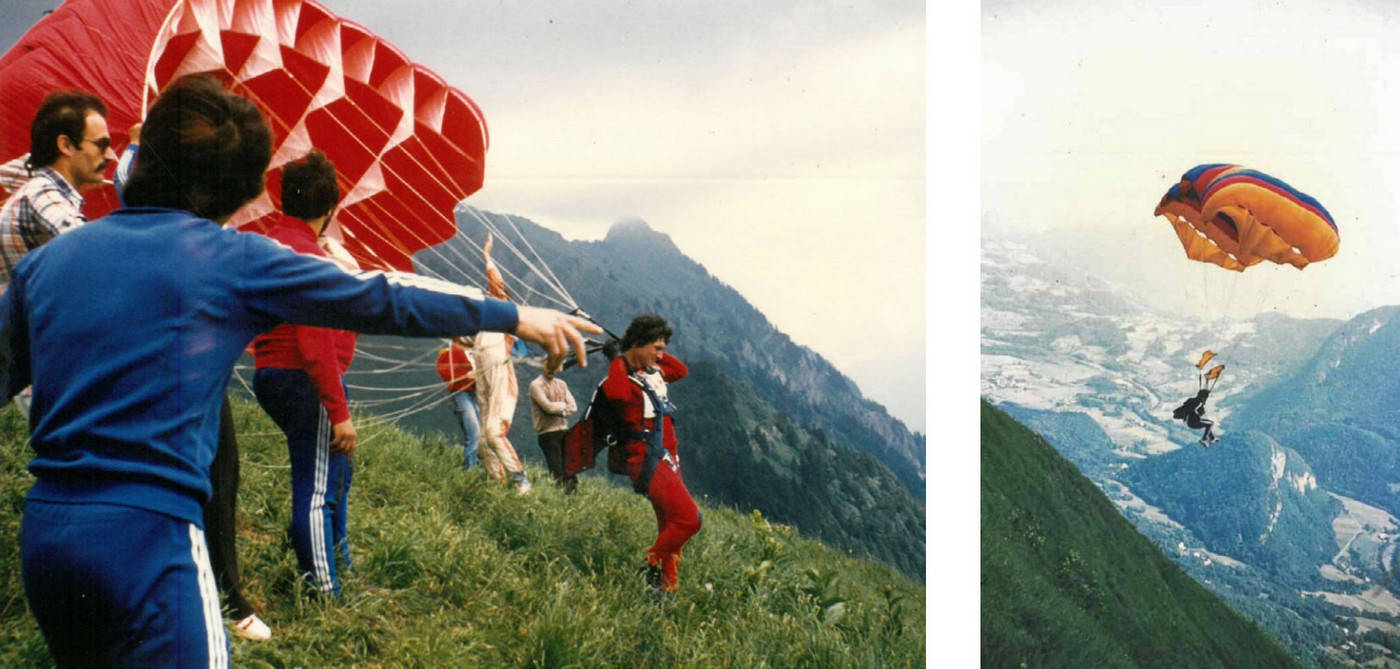 ^ Where would we be today if some band of reckless youth had not invented yet another way of putting themselves in harm’s way? Mandatory equipment: a piece of cloth, some straps, adidas tracksuit, moustache. Non-mandatory equipment: reserve, helmet, self-preservation instinct.
^ Where would we be today if some band of reckless youth had not invented yet another way of putting themselves in harm’s way? Mandatory equipment: a piece of cloth, some straps, adidas tracksuit, moustache. Non-mandatory equipment: reserve, helmet, self-preservation instinct.Chapter 1 covers paragliding gear, showing various options for different purposes, budgets, and types of pilots. I appreciate that the author doesn't try to convince us of his favourite solutions, but honestly rates the pros and cons of every piece. When trying to shave a few grams here and there, it's important to remember that lightness usually comes at a price of performance, durability, warmth, etc. On the other hand, if we want all the warmth, comfort and extra gadgets, our backpack will get so heavy that the day will be over before we even hike to the top! It's up to each pilot to find their own happy level. I wouldn't blindly trust all the weight calculations which appear in the book, as the final weight will depend on wing and harness sizes and other details, but it's important to remember the main message: Every single item, every extra weight will make a difference on the long hike up.
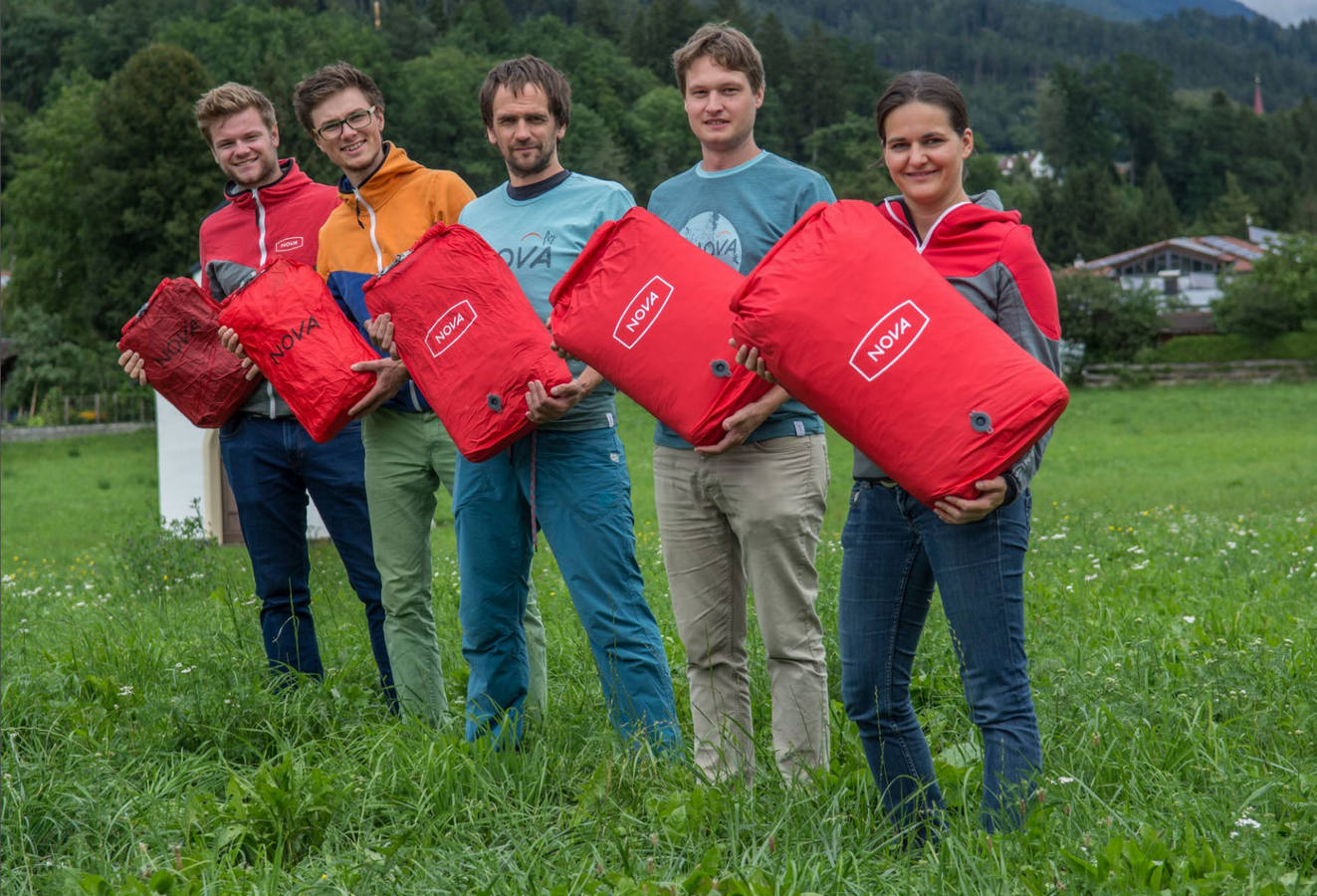 ^ Nova's team showcases packed wing sizes, all using their compression bags. Wing packability is an often-overlooked factor, which will play an important role in shaping our backpack.
^ Nova's team showcases packed wing sizes, all using their compression bags. Wing packability is an often-overlooked factor, which will play an important role in shaping our backpack.In Chapter 2, Aimilios discusses mountain gear, deservedly going into trekking poles as they're a crucial part of hike & fly equipment. There is also a place to appreciate the 1001 uses of duct tape, charging electronics, and other extras. At the end of the chapter, a bit on vol-bivouac gives a good sense of what extra gear may be needed when expanding into vol-bivouac adventures.
 ^ Kinga Masztalerz has camped for the night. Notice her choice for minimalism to reduce her carrying weight...
^ Kinga Masztalerz has camped for the night. Notice her choice for minimalism to reduce her carrying weight...Chapter 3 covers clothing, with bullet-proof systems for any weather conditions. It's a great place to start and you can't go wrong when following Aimilios advice. If you're an experienced hiker or once you gain some experience, you might find other solutions which work for you (I prefer a poncho instead of a rain jacket if it rains, I want to protect my backpack too!).
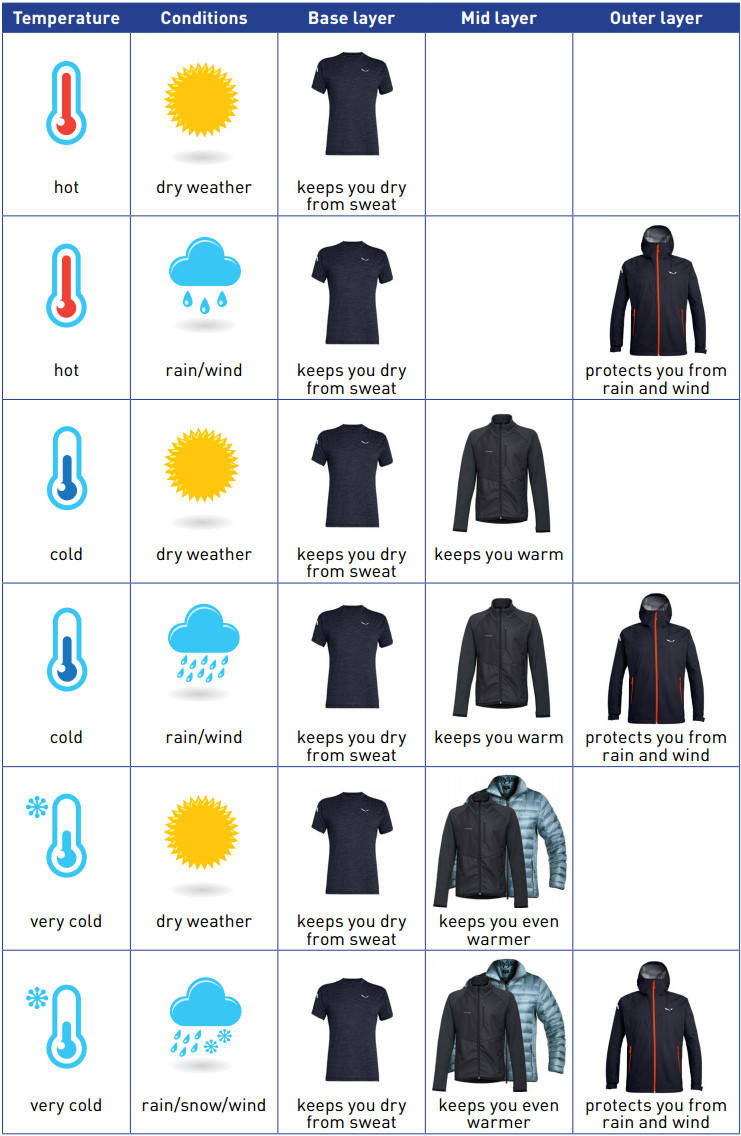 ^ Upper half – the layering or "onion" system consists of three layers: base, middle and outer.
^ Upper half – the layering or "onion" system consists of three layers: base, middle and outer.Chapter 4 is a basic introduction to weather forecasting. It's useful but doesn't replace reading more detailed books on the topic. A list of meteo books and other sources is provided at the end of the chapter.
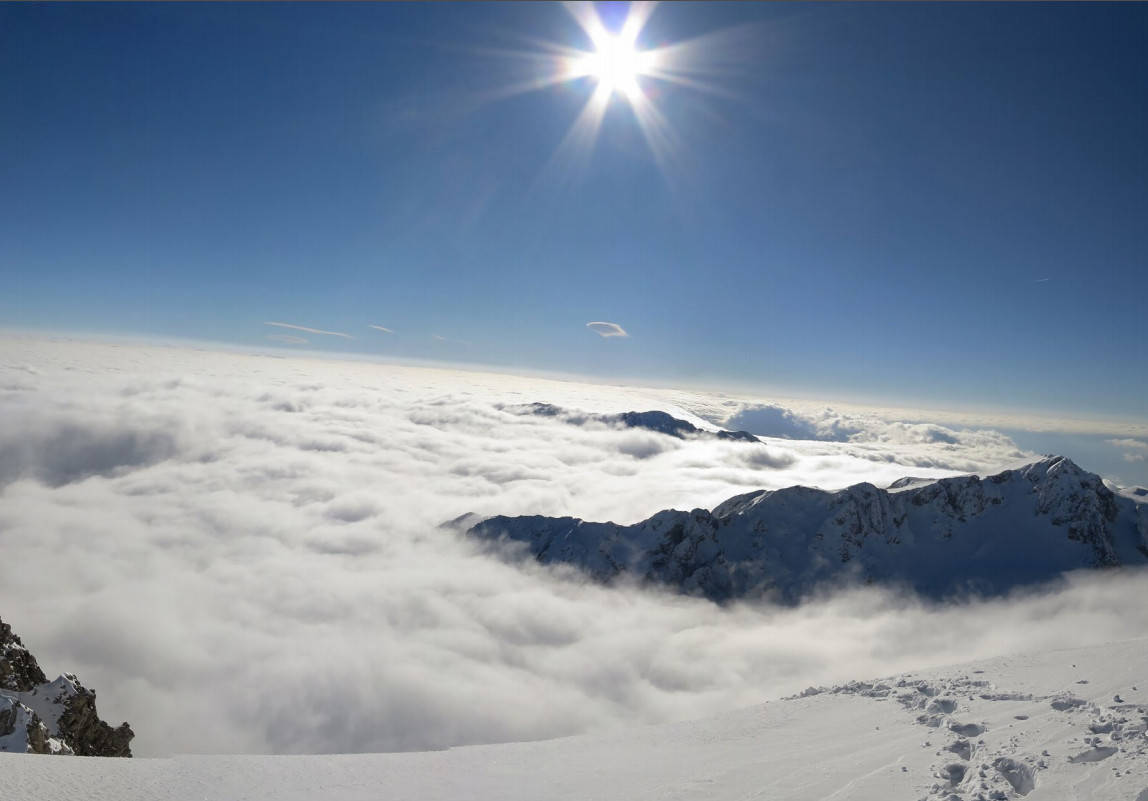 ^ Imagine hiking up the mountain for hours, only to see this at the top. Bummer. We should have predicted this.
^ Imagine hiking up the mountain for hours, only to see this at the top. Bummer. We should have predicted this.The final chapter is what in my opinion makes 'The Beginner's Guide to Hike & Fly' special: It addresses the real core of what makes hike & fly so different to taking a shuttle and flying from an official take-off. From the importance of ground handling to time planning to real-life examples of finding the right take-off, in particular considering topography and wind conditions.
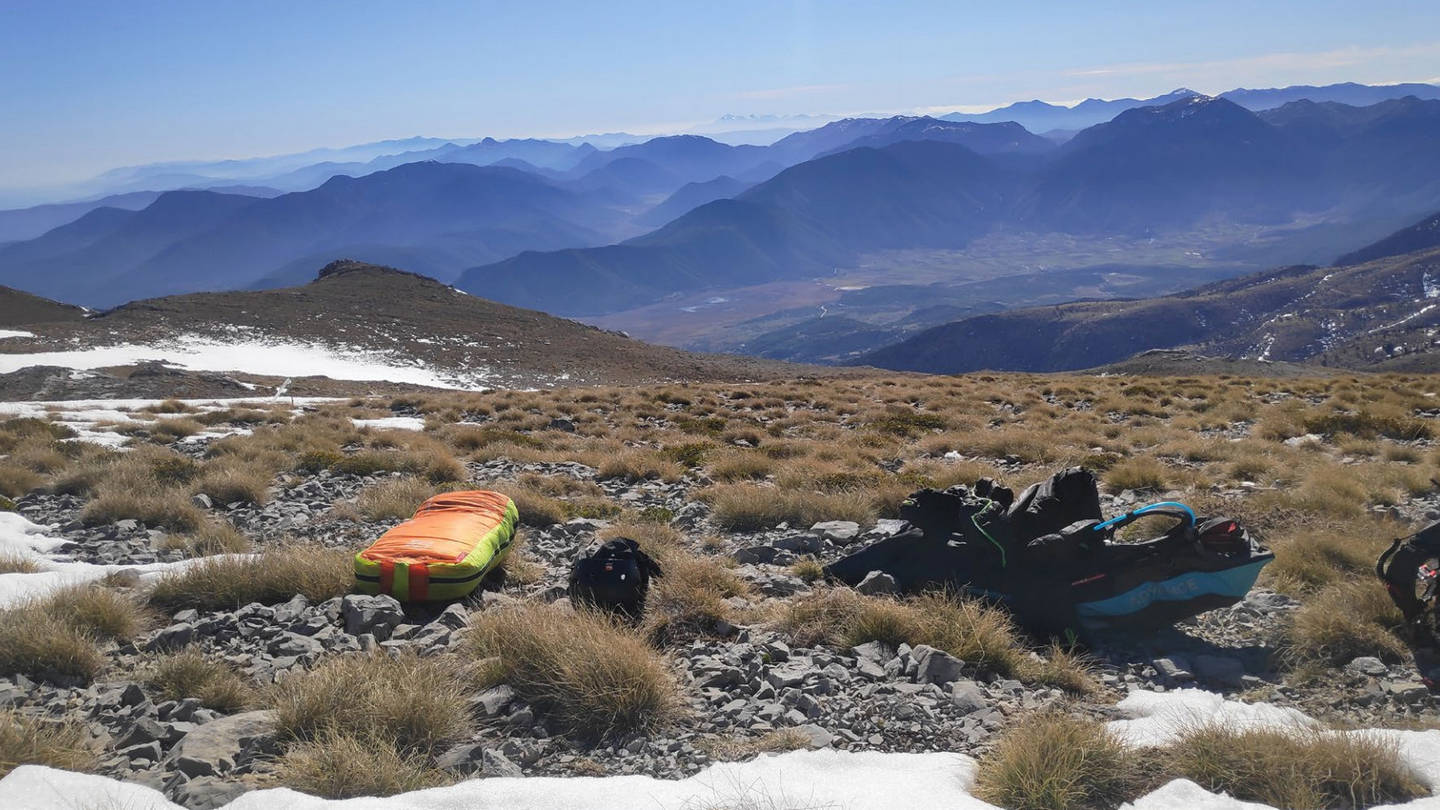 ^ Getting ready to launch. This is an example of low vegetation and gentle terrain inclination, which make up a very easy take-off spot.
^ Getting ready to launch. This is an example of low vegetation and gentle terrain inclination, which make up a very easy take-off spot.When I coach pilots, I do it in a very similar way and this must-read chapter comes as close as you can get to understanding new take-offs without actually being there. My one objection: The author suggests using toilet paper for an improvised windsock, but I strongly support learning to assess the wind and cycles without one, by the feeling on your face, by observing the vegetation, etc. Please don't leave any litter behind, only footprints!
To sum up, 'The Beginner's Guide to Hike & Fly' is a successful attempt to gather all available knowledge around hike & fly into a step-by-step guide, in order to help all those who would like to try it, but aren't sure where to begin. It can help novice hike & fly pilots prevent mistakes and omissions that could potentially prove problematic or even dangerous. It's written in an easy, fast-paced way with a great sense of humour making the read even more enjoyable. If this book had been around when I first got into hike & fly, it would have surely helped me progress smoother and avoid some mistakes on the way.
The Beginner's Guide to Hike & Fly is available as e-book and paperback via www.hikeflybook.eu
* This review originally appeared in SAFA Skysailor Magazine, republished here with kind permission.
